The air hung heavy with smoke and the scent of charred wood. A child’s toy truck lay half-buried in the dirt, its plastic wheels melted. Nearby, a woman screamed her child’s name into the void — a name that would echo through the ruins for days.
Since Russia’s full scale invasion, Ukraine has been a relentless battleground. The war has not only devastated cities and shattered infrastructure but has also left a haunting scar on the lives of ordinary citizens. Families who once lived in peace now find themselves grieving lost loved ones, sheltering in basements, and sifting through rubble for fragments of the lives they once knew.
From Zaporizhzhia to Kryvyi Rih and Dnipro, the impact of Russian strikes reveals the true cost of the conflict, with civilians bearing the brunt of the violence.
Zaporizhzhia and Dnipro Drone Strikes
On March 1, 2025, at approximately 7:30 PM, Russian forces launched simultaneous ‘Shahed’ drone strikes on the Ukrainian cities of Zaporizhzhia and Dnipro. In Zaporizhzhia, a residential building was struck, igniting a fire that engulfed multiple floors. Two people were injured, and five high-rise buildings sustained significant damage. In Dnipro, a similar drone strike resulted in multiple injuries and structural destruction. These attacks are part of a broader escalation targeting civilian infrastructure, inflicting widespread fear and destruction in residential areas.
It was a night like any other until the drone struck. At 7:30 PM, Russian forces launched simultaneous ‘Shahed’ strike drone attacks on residential areas in Zaporizhzhia and Dnipro. In Zaporizhzhia, the drone sliced through the evening sky and crashed into a high-rise building, igniting a fire that would rage for hours.
“I was in my kitchen when the blast hit,” says Oleksandr, a resident of one of the damaged buildings in Dnipro. “The windows shattered, and I felt the floor shake. I ran outside, and the building was already on fire. People were screaming, some were bleeding.”
In Zaporizhzhia, Ivan Fedorov, the Head of the Regional Administration, watched as flames devoured the roof. “At 7:36 PM, the enemy struck using a Shahed drone. The fire was relentless, the smoke so thick you couldn’t see your own hands.”
Inside the building, a woman stood in what used to be her living room, her hands trembling as she lifted a half-burned photograph from the debris. Outside, children huddled in blankets, their eyes wide and glassy, as firefighters fought to extinguish the blaze.
Municipal workers, their faces streaked with soot, moved methodically, boarding up shattered windows with OSB boards. A man knelt on the ground, clutching a child’s singed toy.
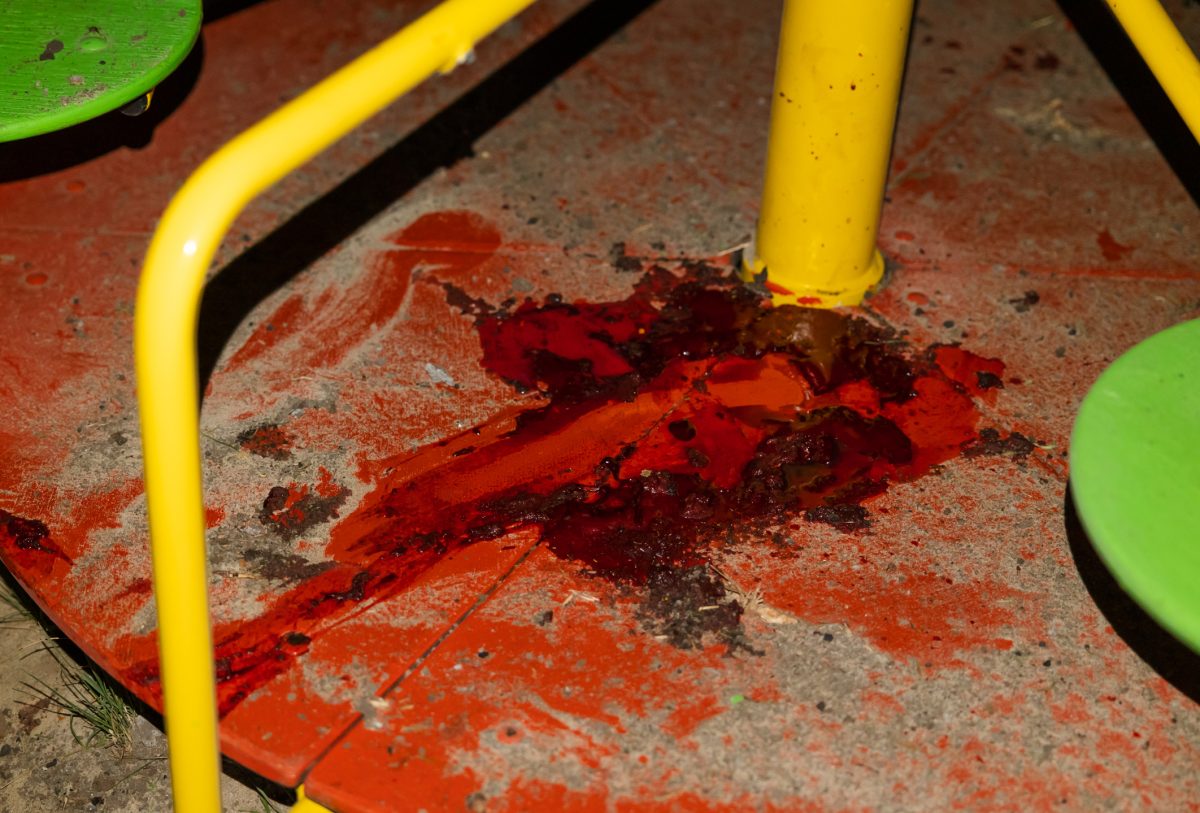
Ballistic Missile Strike in Kryvyi Rih
On April 4, 2025, a Russian ballistic missile struck a residential area in Kryvyi Rih, killing 18 people, including nine children, and injuring over 60 others. The missile hit a playground and several apartment buildings, transforming a once peaceful area into a site of carnage. Among the dead were children playing in the park moments before the impact. The attack left entire families shattered, with survivors facing life-altering injuries and a community struggling to comprehend the scale of the devastation.
The children were playing in the park. Tymoshko, Danilo, Alina. Moments before the missile struck, they were laughing, chasing each other across the playground.
“We were 300 meters away when the siren sounded,” recalls Victoria Shapovalyuk. “It was seconds, not minutes. Everything went gray. My husband was right next to me — dead. Tymoshko, the boy we buried today, was there too. I pushed my granddaughter behind a concrete slab. Maybe that saved her life.”
Victoria lost her husband in an instant. Shrapnel severed his carotid artery. She sustained severe leg injuries and now faces months of surgeries and rehabilitation.
Her mother, Lidiya Rogovska, was the first to arrive. “I ran as fast as I could. When I got there, her leg was torn open. Blood everywhere. My son-in-law was dead. A three-year-old boy was lying there too — lifeless.”
Inside the hospital, Victoria lay still as her mother clasped her hand, whispering prayers into the sterile air. In the playground, flowers, toys, and candles piled up, a silent vigil for the children whose laughter had been silenced forever.
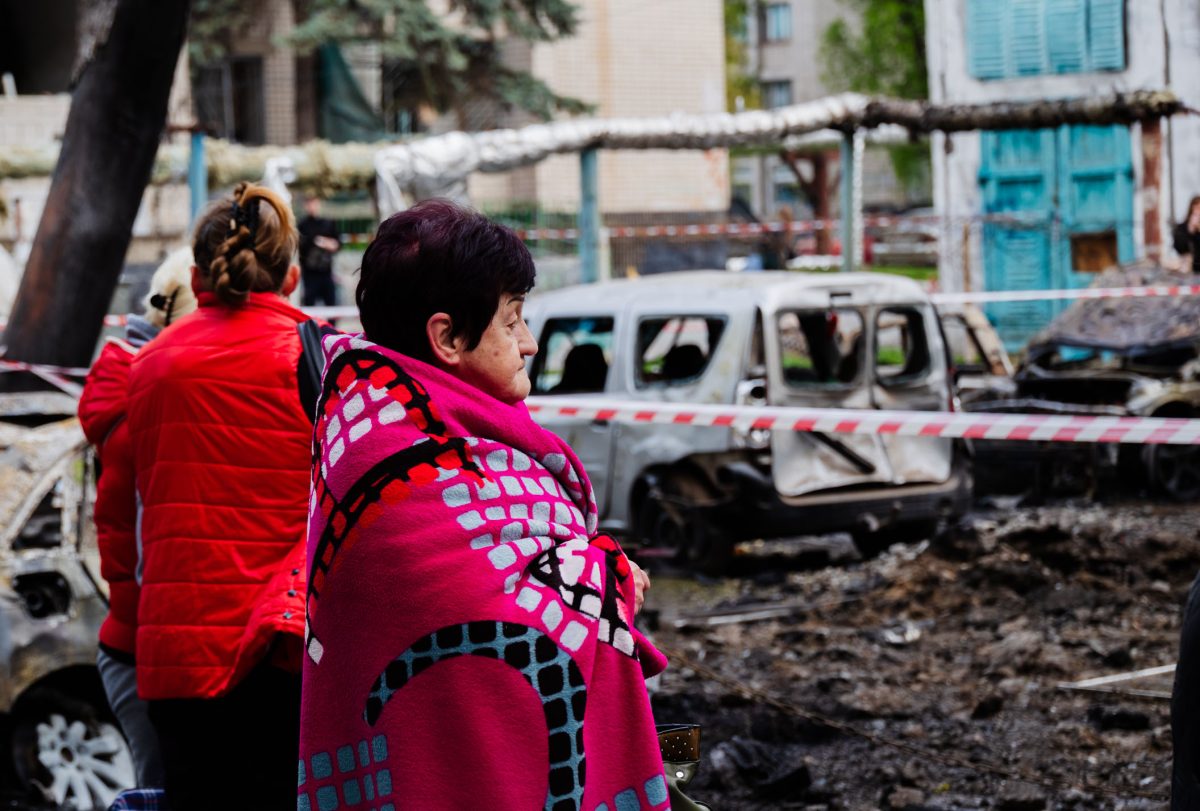
Drone Attacks in Dnipro
On April 17, 2025, Russian drones targeted residential neighborhoods in Dnipro, killing three people, including a 17-year-old girl, and injuring more than 30 residents. Homes, cars, and community centers were destroyed, with fires raging throughout the night. The attack came just days after the Kryvyi Rih strike, compounding the terror for residents already traumatized by ongoing assaults. The scope and frequency of these drone strikes suggest a calculated effort to destabilize and terrorize civilian populations in urban centers.
The air raid sirens wailed again, and Dnipro’s residents ran for cover. This time, there was no warning. Three people were killed, including a 17-year-old girl. Over 30 residents were injured. Homes and cars burned in the streets. The scent of gasoline mingled with the scent of burning flesh.
“The walls shook. Smoke filled the air. Then cars started exploding,” recalls Natalia, who was trapped in her apartment when the drones struck. “A girl ran in. Maybe the shrapnel caught her. She didn’t make it.”
Svitlana watched her house burn. “We tried to put it out, but it was too late. Everything’s gone. The roof, the car, the garden. But we’re alive.”
The streets of Dnipro were a warzone. Cars smoldered, windows shattered, glass crunched underfoot. A child’s toy truck lay in the dirt, its wheels melted into misshapen clumps of plastic.
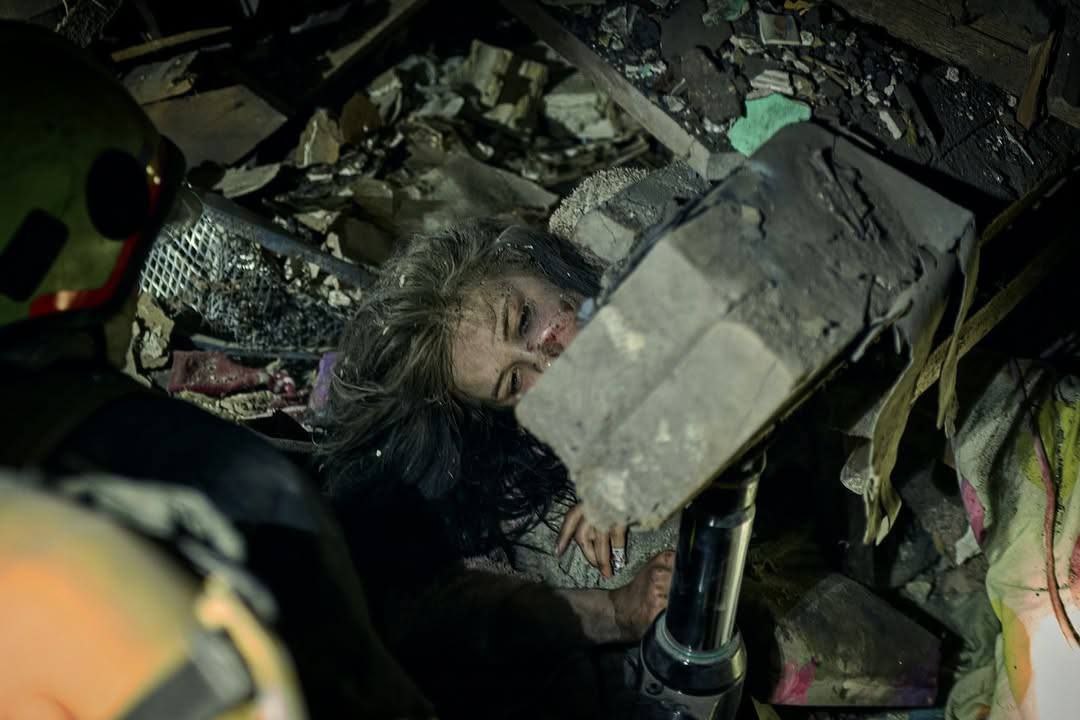
Analyzing the Pattern of Destruction
The attacks on Zaporizhzhia, Kryvyi Rih, and Dnipro reveal a chilling pattern: residential areas, playgrounds, and everyday gathering places are being systematically targeted. These are not military installations. These are homes, schools, parks — the very fabric of civilian life.
According to international law, deliberate attacks on civilians and civilian infrastructure constitute war crimes. Yet, the footage and testimonies captured by the Center of International Communications of Ukraine (CIDEIPS) show that these strikes are not isolated incidents but part of a calculated strategy to sow terror and destabilize communities.
The Shahed drones, ballistic missiles, and cluster munitions used in these assaults are weapons of terror — designed to maximize destruction, inflict mass casualties, and leave survivors trapped in a cycle of grief and fear. Each strike sends a clear message: nowhere is safe.
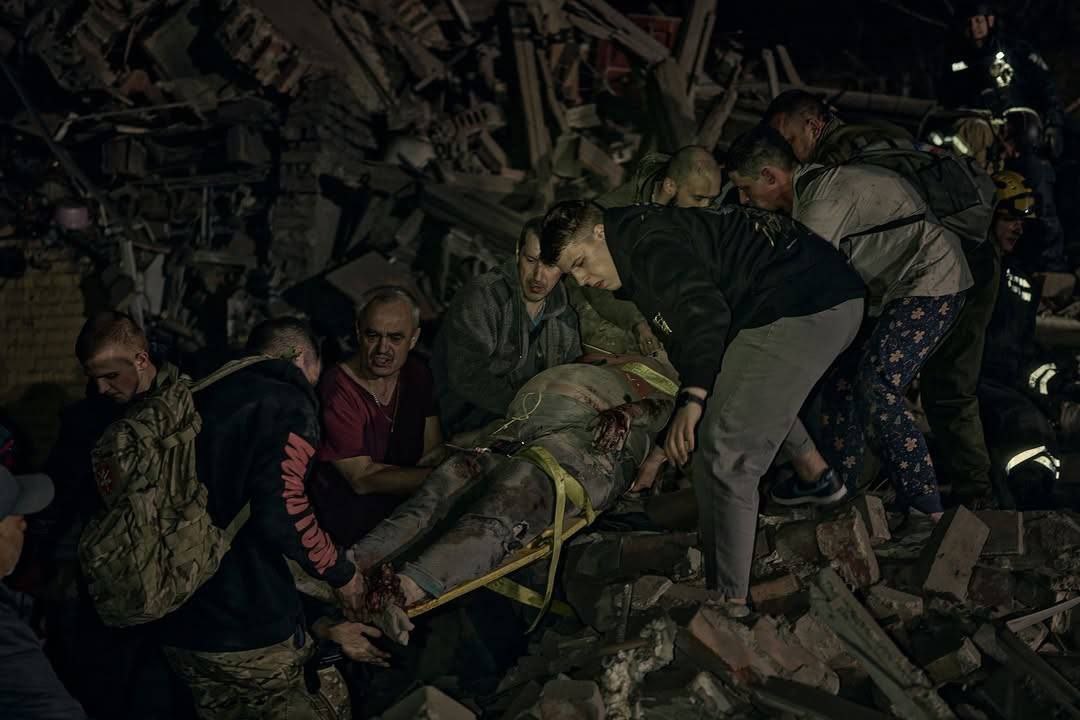
Humanitarian Agencies Sound the Alarm Amid Escalating Crisis
The United Nations Office for the Coordination of Humanitarian Affairs (OCHA) reports that recent intensified assaults have inflicted severe damage on civilian infrastructure, including hospitals and schools, leading to significant civilian casualties and displacement. These attacks have disrupted essential services and hindered humanitarian efforts across affected regions.
Compounding the crisis, the UN has announced a significant reduction in humanitarian aid to Ukraine due to a sharp decline in global funding, particularly from the U.S., whose contributions via USAID have dropped by 83%. Of the 12.7 million Ukrainians in need, the UN now targets 4.8 million people with $1.75 billion in funds, down from an initial plan to reach 6 million with $2.63 billion. The focus remains on those near frontlines, emergency responses, evacuations, and aid to internally displaced individuals.
The United Nations High Commissioner for Refugees (UNHCR) has also been forced to reduce support for displaced Ukrainians due to intensifying frontline attacks and significant funding shortfalls, primarily caused by the suspension of U.S. aid and cutbacks from other Western donors. Critical assistance such as psycho-social support, emergency shelter, and cash aid have been scaled back. The agency has only received 25% of the $3.32 billion it appealed for to aid 8.2 million people in Ukraine.
The World Health Organization (WHO) has verified over 1,600 attacks on health care in Ukraine since the start of the full-scale invasion, resulting in numerous deaths and injuries among medical personnel and patients. These attacks have severely impacted the country’s health infrastructure, limiting organizations’ ability to address the health needs of affected populations.
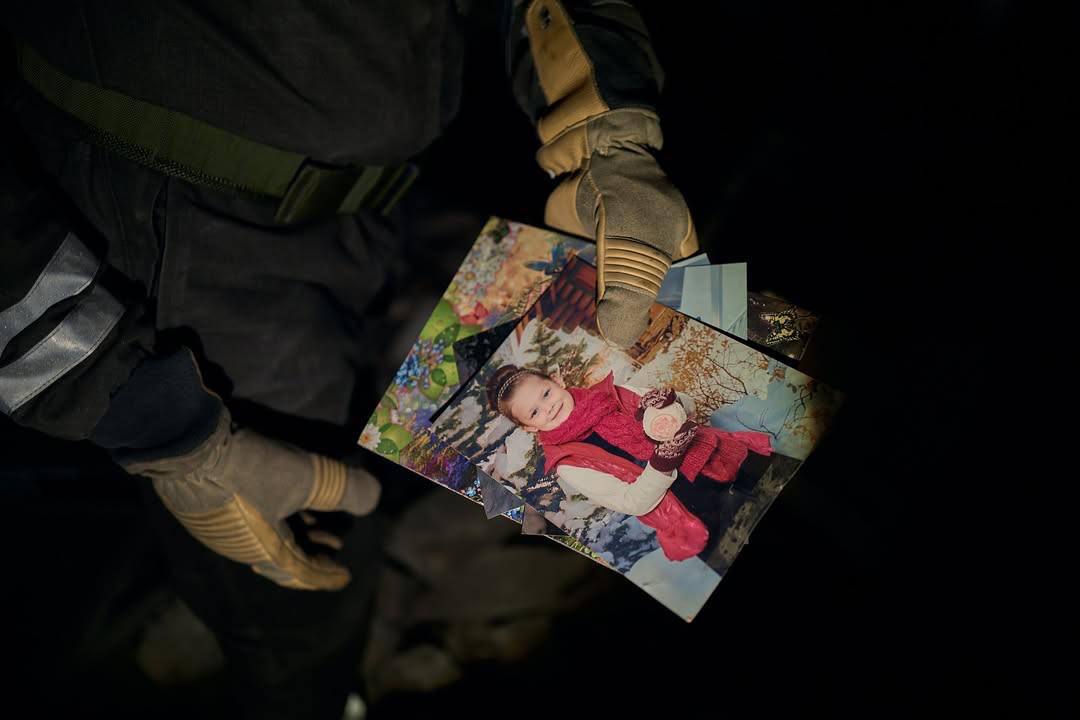
A Call to Conscience: Bearing Witness to Suffering
In Kryvyi Rih, a mother whispers prayers over her daughter’s hospital bed. In Zaporizhzhia, a father picks up a half-burned photograph, his hands trembling. In Dnipro, a child’s toy truck lies abandoned in the dirt, a silent witness to lives upended in an instant.
As the world watches, the survivors continue to rebuild — and to remember. But as the footage, photographs, and testimonies from CIDEIPS make clear, the international community cannot afford to look away. Each shattered window, each torn limb, each child’s lifeless body is a cry for justice. The question now is: Who will listen?
The footage, photographs, and testimonies captured by the Center of International Communications of Ukraine (CIDEIPS) reveal a pattern of targeted assaults on civilian areas. Hospitals are overflowing with the wounded. Playgrounds have become graveyards. Emergency shelters are crowded with families who have nowhere left to go.
This article incorporates interviews, photographs, and detailed reporting provided by the Center for International Communications of Ukraine (CIDEIPS), a leading organization dedicated to documenting the humanitarian impact of the conflict.





